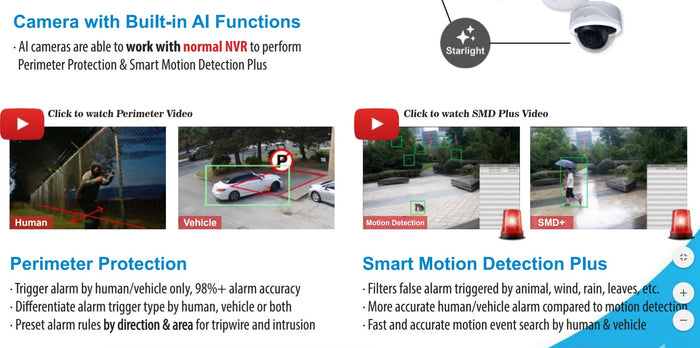Why You Need Active Deterrence Camera?
It's been a long time that typical security surveillance systems only work reactively. It waits until an issue arise and things have gone downhill. For example: a 24/7 monitored alarm system is only activated after a break-in happened or a false alarm triggered. A traditional CCTV video surveillance system is only used for capturing and recording evidence and events.
Although, sometime a security camera (real or fake dummy camera) could be used to deter the targets, security surveillance systems don’t actively alert before the bad things happen and prevent these events.
With Active Deterrence technologies in video surveillance, a more proactive or a planned security strategy has been developed. The camera reacts before a situation occurs, therefore preventing an issue from ever arising.
It can proactively deter intruders outside the perimeter and help prevent potential crimes with built-in features like AI-powered Smart Motion Detection SMD Plus, alarm siren, warning light, two-way audio and real-time notifications. Powered by the manufacturer awarding-winning deep learning algorithm, it provides high accuracy intrusion alarms and sends real-time event notifications.






